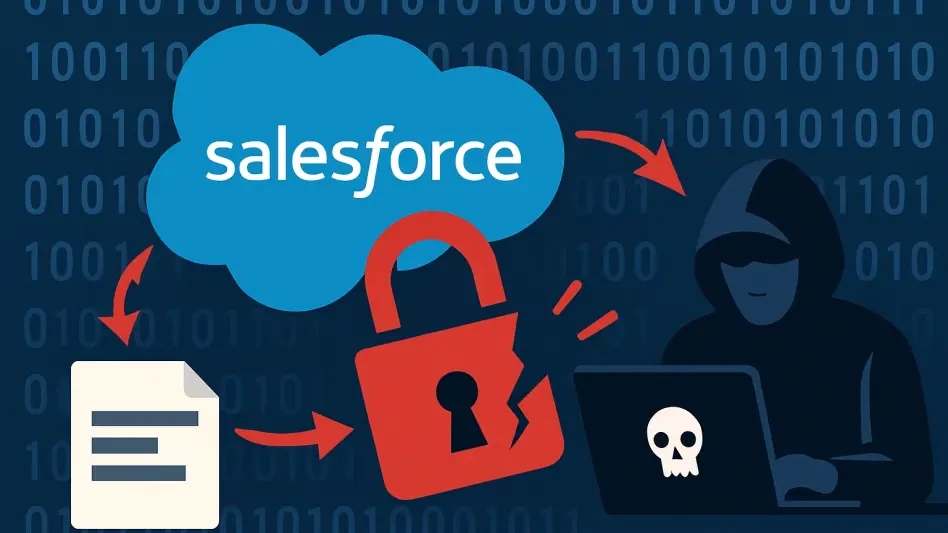Victoria’s Secret, one of the most renowned names in the lingerie retail sector, recently experienced a significant cybersecurity breach affecting its digital operations, leading to an abrupt suspension of its U.S. website and several in-store services. The digital disruption has left customers grappling with delayed or inaccessible services while encountering messages acknowledging the security incident and the ongoing efforts to remediate it. The company has enlisted the aid of third-party cybersecurity experts in a bid to swiftly address the security challenges and restore normal operations. This breach has notably impacted Victoria’s Secret, given its dependency on digital sales, which generated about $2 billion last year, representing around one-third of its total annual revenue. Adding to the company’s woes, the breach resulted in a nearly 7% drop in its stock value, causing apprehension among investors.
Complexities of the Breach
Speculation Surrounding the Incident
While specifics about the breach remain largely unrevealed, various speculations have surfaced, particularly concerning the potential compromise of customer data and possible involvement of law enforcement authorities. The timing of the attack, coinciding with the U.S. Memorial Day holiday, aligns with a known tactic used by cybercriminals who exploit holiday periods characterized by reduced IT staff coverage. Although the exact nature of the breach has not been confirmed, discussions revolve around possible attack vectors including ransomware, SQL injection, and remote code execution. These techniques have been common in recent cyber attacks on retailers, paralleling incidents that have affected major UK brands like Marks & Spencer and Harrods in the past.
Increased Vulnerability in Retail
The breach has thrown into sharp relief the growing vulnerabilities faced by large-scale digital retail operations. As e-commerce dominance continues to grow, so does the attack surface available to cybercriminals, which often surpasses organizations’ abilities to mount effective defenses, particularly when they rely on third-party service providers. This incident emphasizes the urgent need for robust incident response mechanisms, such as consistent vulnerability assessments, comprehensive employee training, and well-structured communication protocols. The affected customers have expressed dissatisfaction due to sparse updates and lingering concerns over the possible exposure of their personal data.
Victoria’s Secret’s Response Strategy
Restoring Secure Services
In light of the breach, Victoria’s Secret has made it a priority to revamp its security infrastructure and restore secure operations, committing to a swift resumption of services. The company’s management of the incident is under intense scrutiny from both customers and industry observers as more details surrounding the breach are expected to be disclosed. One of the most pressing elements in the aftermath is the transparency with which the company handles the information and proactive security measures it adopts to mitigate future risks. Customers and stakeholders alike are keenly watching how the company navigates this crisis to regain trust and reinforce its market stature.
Long-Term Implications
This event underscores not only the importance of fortified digital security strategies but also highlights the critical need for transparency in corporate communications amidst a breach. As the retail sector continues to face escalating cyber threats, it becomes imperative for companies like Victoria’s Secret to enhance their cybersecurity measures and ensure they can adequately protect customer data. The efficacy of Victoria’s Secret’s response and any subsequent policy changes will be instrumental in maintaining its standing in the market and rebuilding consumer confidence. As firms move forward, forging a path of resilience against cyber threats remains a necessary strategic focus.
Future Directions for Retail Cybersecurity
Enhancing Cyber Preparedness
The cybersecurity breach at Victoria’s Secret serves as a poignant reminder of the evolving and ever-present threats faced by modern retailers. As these entities rely increasingly on digital channels, they must not only bolster their internal security measures but also closely vet third-party providers and partners who contribute to their digital architecture. Establishing regular audits, engaging in ongoing monitoring, and adopting artificial intelligence-driven threat detection tools are steps that can enhance preparedness against such incidents. Retailers must foster a culture of security awareness through comprehensive training programs that keep employees informed of current threats and highlight the importance of vigilance.
Continual Adaptation and Customer Trust
The breach’s specifics remain mostly undisclosed, sparking speculation about potential compromises of customer information and the involvement of law enforcement. Significantly, the timing of the cyber attack aligns with the U.S. Memorial Day holiday. This timing reflects a known strategy cybercriminals employ; they take advantage of holiday periods when IT staff coverage is typically diminished. Though details about the breach are yet to be verified, discussions suggest that it might involve attack methods such as ransomware, SQL injection, and remote code execution. These tactics have been prevalent in recent cyber assaults on retail companies, resembling incidents that have previously impacted significant UK brands, including Marks & Spencer and Harrods. By paralleling strategies seen in past attacks, experts widely recognize these methods as favored tools in the cybercriminal arsenal for targeting retailers during vulnerable times like holidays.








